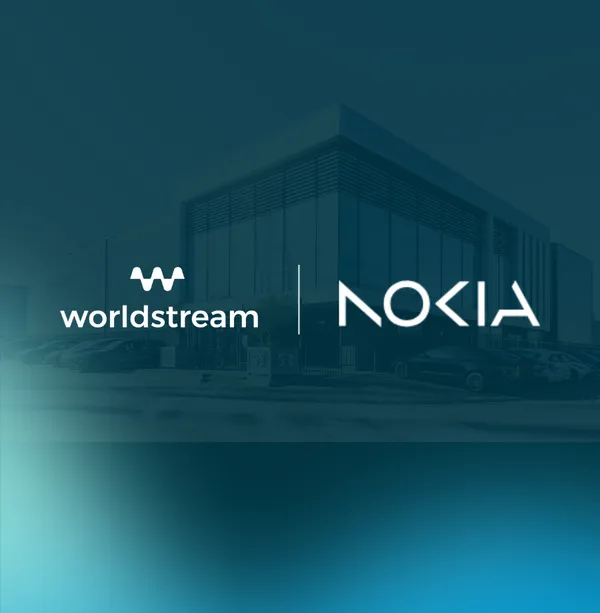The Pros and Cons of Hybrid IT and Multi-Cloud Deployments

Knowledge blog

One of the options for configuring an IT environment is selecting a particular underlying infrastructure based on factors like the nature of business applications, specific storage needs, and the sector in which an organization operates. You also have the option of choosing a hybrid IT environment that allows for the use of various types and flavors of cloud computing in addition to hosted and on-premises server systems.
Executive Summary – Multi-cloud deployments and hybrid IT are two different but complimentary approaches to modernizing IT environments. With its flexible combination of physical servers and public and private clouds, a hybrid IT approach may create a seamless environment that is excellent at handling legacy and compliance-sensitive applications. Because of its versatility, which guarantees improved disaster recovery, security, and cost-effectiveness, it can be a good fit for a range of organizational requirements.
A multi-cloud strategy differs from hybrid cloud in that it makes use of services from multiple public cloud providers. In addition to avoiding vendor lock-in, this a multi-cloud approach may provide organizations with redundancy, scalability, and the flexibility to choose the best features and cost levels. The intricacy of overseeing multiple platforms in a multi-cloud environment might raise expenses and call for specific management expertise. Another major difficulty is maintaining consistent privacy and data security across many clouds.
These models do not, however, come without challenges. Cost, performance, and security must all be balanced when implementing hybrid IT scenarios. It might also necessitate continuous improvements. As an organization, you’ll need to carefully consider these benefits and drawbacks.
The Pros and Cons of Hybrid IT and Multi-Cloud Deployments
One of the options for configuring an IT environment is selecting a particular underlying infrastructure based on factors like the nature of business applications, specific storage needs, and the sector in which an organization operates. You also have the option of choosing a hybrid IT environment that allows for the use of various types and flavors of cloud computing in addition to hosted and on-premises server systems.
In this article, we will highlight the benefits as well as some potential drawbacks associated with implementing hybrid IT and multi-cloud infrastructures.
Worldstream’s broad and growing Infrastructure-as-a-Service (IaaS) solution portfolio allows it to support both kinds of infrastructure, whether they are installed directly by Worldstream customers or by service providers like MSPs and systems integrators. Sure, some organizations might like to keep things straightforward and build their IT infrastructure on dedicated servers, for example, or specifically in a private cloud or public cloud. Worldstream can accommodate you in any of these situations but let us elaborate now on the pros and cons of hybrid IT and multi-cloud deployments.
Clear Definitions of Hybrid IT and Multi-Cloud
First, let’s clarify what a hybrid IT and a multi-cloud infrastructure may include, also because the use of the terms in the market sometimes still varies.
A hybrid IT environment combines one or more public clouds and one or more private clouds. It may also include physical servers, either in company-owned server rooms or in third-party hosted data centers. Physical servers may be used for legacy applications as well as applications that need a lot of processing power or must adhere to strict compliance standards. The different types of infrastructures within a hybrid IT environment can in principle continue to function separately from each other, but exchange applications and data with each other where necessary. This may provide a situation with a wide range of segmented, customizable choices for the IT environment’s underlying infrastructure, while users should be able to perceive the infrastructures as a unified IT environment in which everything works well together. When talking about a hybrid cloud environment and not about hybrid IT, it would be a mix of private cloud and public cloud, without physical servers playing a role.
A multi-cloud IT environment is a cloud deployment approach that enables the hosting of an IT infrastructure by using several cloud providers. This should not be confused with hybrid cloud, which usually entails using both public and private cloud services. Leveraging a wide range of cloud computing services from multiple or at least two public cloud providers is central to the multi-cloud idea. This approach may integrate a range of public clouds and their corresponding storage infrastructures to support various applications and workloads. Organizations may get more flexibility from a multi-cloud setup by allocating resources across different public cloud platforms, hence facilitating a more dynamic and adaptive IT environment.
Using multiple public clouds may provide enhanced redundancy, scalability, and flexibility compared to a situation where an organization is depending on just one public cloud provider. It may also help save expenses by preventing vendor lock-in while enabling organizations to use the best features and prices offered by each public cloud infrastructure provider.
Advantages of Choosing a Hybrid IT Model
A hybrid IT strategy emerges as a critical answer for organizations seeking to combine cost efficiency and security in their IT infrastructures. This method leverages the scalability of the public cloud for specific operations while maintaining critical data on dedicated servers or private clouds, assuring cost-effectiveness and financial flexibility. Hybrid IT can especially be advantageous for organizations with varying needs, not only providing economic benefits, but also preparing the way for progressive modernization of outdated systems, data sovereignty compliance, efficient workload deployment, and enhanced disaster recovery, all while maintaining the highest security for sensitive data. The next section of this article provides an outline of the primary advantages of choosing a hybrid IT strategy.
- IT Infrastructure Cost Reductions – Saving costs is one of the main advantages for an organization of choosing a hybrid IT strategy. They may use public cloud infrastructure to offload parts of their (high) IT resources consumption and only pay for it when they need it. By removing the expense of overprovisioning, a hybrid IT approach may provide the IT budget with financial flexibility and, therefore, cost effectiveness. As part of a hybrid IT strategy, online retailers or event-oriented businesses, for instance, can use this technique called ‘cloud bursting’ to temporarily allow applications to switch to public cloud resources to meet spikes in Internet traffic during peak demands – like Black Friday, the Christmas season, or during an event, ensuring a positive customer experience all year long without having to pay for peak-level capacity.
- Gradual Application Modernization – By combining cloud services via a hybrid IT approach, legacy applications may be gradually modernized without the risks associated with a full migration. Legacy applications might lack the flexibility and efficiency of today’s cloud options, but they may represent the backbone of an organization’s operations that one is hesitant or unable to let go of for the time being. A full cloud move can be risky and disruptive, resulting in downtime and compatibility issues that may affect business continuity. Organizations may mitigate these risks by choosing a hybrid cloud approach. This method allows an organization to maintain its core systems on-premises, on hosted dedicated servers, or in a co-located data center, while gradually expanding functionality to cloud infrastructure – whether public and/or private cloud. By doing so, organizations can gradually upgrade their applications and take advantage of flexible and modern cloud features.
- Data Sovereignty Compliance – To comply with data residency requirements, organizations may utilize public cloud resources for less sensitive operations while storing and processing sensitive data on a (hosted) private cloud, on dedicated servers, in a co-located data center rack, or on-premises. This may help assure legal compliance. Compliance with data sovereignty may be a particular challenge for businesses operating in multiple countries. This is because different countries have different rules and regulations on where and how data, especially sensitive or personal data, should be kept and handled. In this scenario, a hybrid IT strategy might be beneficial in managing such a complicated, transnational IT environment. By mixing multiple types of IT infrastructure, organizations may enhance operational efficiency while satisfying regulatory requirements. A hybrid IT approach in such a case may help decrease the risk of legal penalties for noncompliance while simultaneously providing a competitive edge.
- Application Development and Testing – Developers may construct and test applications utilizing the scalability of the public cloud. Once tested and stable, applications may be deployed to a (hosted) private cloud or dedicated servers for production, providing cost-effectiveness and security. The Scalability of public cloud infrastructure can be an important asset throughout development and testing phases. Using public cloud, developers may instantly scale up and scale down resources as required, supporting the ebb and flow of testing needs without requiring a significant investment in hardware. Adaptability can be critical for agile development approaches, which may rely on quick iteration and continuous integration/continuous deployment (CI/CD). The vast array of services and tools available in public cloud offerings may also provide developers with a rich environment in which to experiment with new technologies and architectures, fostering innovation and creativity.
- Optimized Workload Deployment – Within a hybrid IT setting, workloads can more easily be deployed according to unique needs. For example, data-intensive workloads that need to be accessed quickly could be maintained on dedicated servers or on-premises while workloads demanding the highest flexibility might benefit from being hosted in a public cloud environment. Applications that need quick and frequent access to huge amounts of data might benefit from being kept in a data center within a certain distance near a company’s offices. Because of its closeness to users and data sources, IT infrastructure deployed as such may benefit from reduced latency, allowing for quicker data retrieval and processing. The beauty of a hybrid IT approach is that managing workloads does not even have to result in a fixed situation where certain workloads are managed on specific types of infrastructure. Achieving a temporary optimal balance of cost, performance, and security along the way, and then continuously modifying it, can even be an ultimate objective.
- Adaptive Work Environments – A hybrid IT approach can more easily meet an organization’s remote workers’ evolving needs by keeping mission-critical operations co-located, on dedicated servers, on (hosted) private cloud, or on-premises while providing secure cloud services access to enterprise applications and data from anywhere. A hybrid approach may thus accommodate the changing demands of an organization’s remote workforce while also ensuring mission-critical processes are maintained securely and effectively. Simultaneously, by using the public cloud’s global reach, a hybrid IT strategy may provide secure access to enterprise applications and data from anywhere. This adaptability is crucial for supporting a distributed workforce since it allows workers to access resources no matter where they are. Because of the cloud’s scalability and elasticity, resources may be rapidly adjusted to suit the varying demands of remote workers, whether scaling up during peak hours or scaling down to reduce expenses.
- Data Disaster Recovery – Hybrid IT setups may provide a cost-effective disaster recovery (DR) solution by replicating essential data and applications to a public cloud, which can be triggered in the event of a physical server (component) failure. Critical for business continuity, a hybrid IT strategy can provide effective DR without the higher costs associated with traditional DR solutions. In a traditional disaster recovery setup, DR often necessitates a significant investment in duplicate hardware equipment housed in a separate physical location. For many organizations, this strategy may be too expensive, particularly for small to medium-sized businesses. However, a hybrid IT strategy may relieve the bulk of this budgetary strain. It allows critical data and programs to be replicated to a public cloud infrastructure of choice, which subsequently may be utilized as a failover method if a physical server or component fails. This cloud-based disaster recovery technique eliminates the need for extensive physical infrastructure, resulting in considerable cost savings.
- Enhanced Security for Sensitive Data – A hybrid IT strategy enables organizations to benefit from public cloud infrastructure’s sophisticated analytics, flexible data management, and compute resource deployment while maintaining complete control over sensitive data and data storage location by hosting it on dedicated servers, in a (hosted) private cloud, co-located in a third-party data center, or on-site. A hybrid method allows organizations to choose where to store and handle various kinds of data depending on their sensitivity. For enhanced security, non-sensitive operational data may be processed within a public cloud environment to take advantage of its scalability and efficiency, while the most sensitive data could be kept on dedicated servers, co-located, or in a (hosted) private cloud. A hybrid IT approach allows organizations to impose tight security standards that may be more difficult to achieve in a public cloud environment. Although public cloud providers nowadays offer very comprehensive data security measures, in certain cases it may still be advisable to opt for the alternative – whether it is about data stored on physical equipment in company-known data centers or virtualized infrastructure on that equipment.
Challenges When Deploying a Hybrid IT Model
To manage a hybrid IT environment successfully, you will need the right tools and expertise. These are not common abilities and acquiring them through IT training or having it performed by an MSP or systems integrator might add up in terms of costs. Cost sure is an important factor to consider when getting ready to deploy a hybrid IT strategy. As we said before in this article, there are benefits to hybrid IT in terms of costs, but there may also be drawbacks if an organization lacks the resources and expertise necessary to run a hybrid IT system effectively.
When used extensively, public cloud computing for example may become somewhat costly. Data center colocation on the other hand might become a costly choice too though if the data center racks are always half-empty. Furthermore, employing dedicated server resources as part of a hybrid IT strategy might become costly as well if they are sitting idle. In addition, private cloud infrastructure can also become expensive when the underlying physical infrastructure must first be purchased and configured. Nonetheless, it sure is possible to manage a hybrid IT environment in an inexpensive and efficient manner while also successfully coordinating the use and interplay of various resources. A hybrid IT strategy can surely bring organizations cost benefits, given that they are prepared for its requirements in terms of setup and management.
When adding on-premises components to a hybrid IT model, you typically need large capital investments to buy physical equipment, such as servers, storage systems, and networking equipment, and invest in data center infrastructure. This may also be a hurdle for many firms when it comes to adopting a hybrid IT strategy and, as a result, adopting a cost structure that is focused on capital expenditures (CapEx) rather than operational expenditures (OpEx). It is important to note that these capital expenses for on-premises IT infrastructure are not one-time expenditures. Rather, they include continual investments in hardware upgrades, replacements, and expansions – to keep up with the rapid enhancements and innovations in technology and the expanding requirements set by the business. Expenses associated with hiring IT experts, such as salaries, training, and ongoing education, might represent another challenge to consider when it comes to the management and maintenance of on-premises IT infrastructure as part of a hybrid IT model, particularly considering how difficult it is to find IT specialists these days. It may therefore be a challenging for businesses to adopt hybrid cloud models which include on-premises components.
Challenges like these can be easily overcome though by working with an IaaS partner like Worldstream and implementing a hybrid model that trades on-premises components for professional infrastructure offered by a partner like Worldstream. We could support your business with the deployment of data center colocation, (tailored) dedicated servers, private cloud, our proprietary WS Cloud public cloud platform, access to the well-known public cloud providers, and cybersecurity solutions. Additionally, we have a wide variety of software-defined infrastructure solutions that may be added ‘as-a-service’ to a hybrid IT model in a highly flexible manner.
Benefits and Drawbacks of a Multi-Cloud Approach
Using multiple cloud service providers (CSPs) in an IT environment can have its benefits for an organization. However, as with implementing a hybrid IT environment, it can also present some drawbacks that you should at least be aware of if you take a multi-cloud approach. In the following, an overview of the benefits and challenges of multi-cloud.
Preventing Vendor Lock-In – Remaining independent of a single cloud service provider is one of the strongest arguments in favor of selecting a multi-cloud approach. A multi-cloud strategy may ensure that an organization can utilize the newest and most innovative technologies, implement best-of-breed solutions, and provide employees with truly all the tools they need to perform their jobs as efficiently as possible.
- Boosting IT Infrastructure Performance – By using a multi-cloud approach, organizations may find the quickest way to develop an architecture that maximizes application performance. Using multi-cloud, they can make segmented selections between cloud service providers and their infrastructures based on criteria like data center locations or geographical zones as well as the ability of a CSP to meet performance and pricing requirements.
- Increasing IT Infrastructure Resilience – Relying on only one CSP may put an organization’s assets and operations at significant risk since outages may occur for any cloud provider at any moment. With a multi-cloud approach, organizations may benefit from enhanced failover choices, security, as well as greater backup and disaster recovery options.
- Enhancing IT Scalability and Flexibility – Within the context of the exponential rise of data volumes for organizations, multi-cloud architecture can be an ideal solution for companies that are looking to store and manage their data. A hybrid IT approach can give them the flexibility to granularly adapt their storage needs to any specific and segmented requirements of the organization.
- Fulfilling the Criteria for Compliance – By leveraging multiple cloud providers, organizations may granularly choose cloud services that comply with industry-specific or regionally specific regulatory standards. This approach enables a customized framework for compliance, whereby several suppliers may offer specific certificates for compliance (such as GDPR, or ISO). Businesses that operate in highly regulated sectors or in multiple countries may need this flexibility to make sure they always remain compliant.
So much for the many benefits that a multi-cloud approach can bring to an organization. There are also some obstacles though that you could run into while deciding to employ several cloud service providers at once, as listed below.
Potential Rise in Cloud Infrastructure Expenses – A multi-cloud strategy’s main disadvantage might be the unintended possibility of rising cloud costs. Managing multiple cloud environments may complicate resource allocation and invoicing. Every cloud provider may have a distinct pricing structure, making it challenging to analyze prices unambiguously and minimize costs. Without careful multi-cloud management, expenses may mount up quite fast. The financial gains from a multi-cloud strategy may therefore be greatly reduced in the absence of a planned approach to resource use and cost control.
- Expert Cloud Management Knowledge – Another obstacle to effectively implementing a multi-cloud strategy might be the need for advanced cloud management expertise. Every cloud platform is different, with its own collection of services, tools, and administration interfaces that could need usage by those with specialized skills and training. For IT staff, this intricacy may mean a challenging learning curve and the need for continual training and upskilling. Some organizations might therefore struggle to fully use the benefits of each cloud platform if they lack the required expertise, which may lead to resource waste and perhaps to increased risks to their IT infrastructure.
- Data Protection and Compliance – Assuring data security and compliance across several cloud environments can be another drawback of a multi-cloud approach. Maintaining a consistent security posture across multiple clouds can be challenging since distinct cloud service providers may have different security and compliance procedures in place. The risk of data breaches and non-compliance with privacy standards may be elevated by this fragmentation, which may lead to gaps in an organization’s data security posture. Furthermore, moving data across clouds might potentially come with additional security challenges.
Worldstream Offerings for Hybrid IT and Multi-Cloud
Worldstream was founded in 2006 by childhood friends who shared a passion for gaming, Worldstream has evolved into an international IT infrastructure (IaaS) provider. Our mission is to create the ultimate digital experience together with you and our partners.
We advise, design, and provide advanced infrastructure solutions, offering peace of mind to IT leaders at tech companies. With a commitment to high-quality infrastructure, industry-leading service, and strong partnerships, we simplify IT leaders’ lives and provide round-the-clock 24/7 support.
Worldstream offers every imaginable component for effectively setting up hybrid IT infrastructure and multi-cloud solutions, also at the edge. , a VMware-powered private cloud, and secure cloud on-ramps from the data center to well-known American public cloud providers are some examples of the hybrid IT and multi-cloud building blocks provided by Worldstream. Our proprietary WS Cloud public cloud platform powered by Virtuozzo open-source technology additionally offers a cost-effective European cloud alternative, while a broad spectrum of software-defined infrastructure solutions in Worldstream’s portfolio can provide additional flexibility and (cost) efficiency in shaping a hybrid IT and/or multi-cloud architecture.
You might also like:
- The Benefits of a Distributed Multi Location Data Center Setup.
- 7 Benefits of Using Public Cloud Infrastructure.
- A Solid Network Backbone, the Core for Any IT Infrastructure.
Have a question for the editor of this article? You can reach us here.

Latest blogs
CPU Steal Time on a VPS: How to Spot Contention and Decide on Dedicated
Knowledge blog

The Ultimate Gaming Latency Guide: How to Eliminate Lag and Maximize FPS
Knowledge blog

Growing smarter with less maintenance

Knowledge blog

Worldstream and Nokia Join Forces for Next-Gen DDoS Protection

News

Worldstream unveils new positioning and offers customers more control over their digital infrastructure

News

5th Gen AMD EPYC 9355P – Now Live at Worldstream

News
